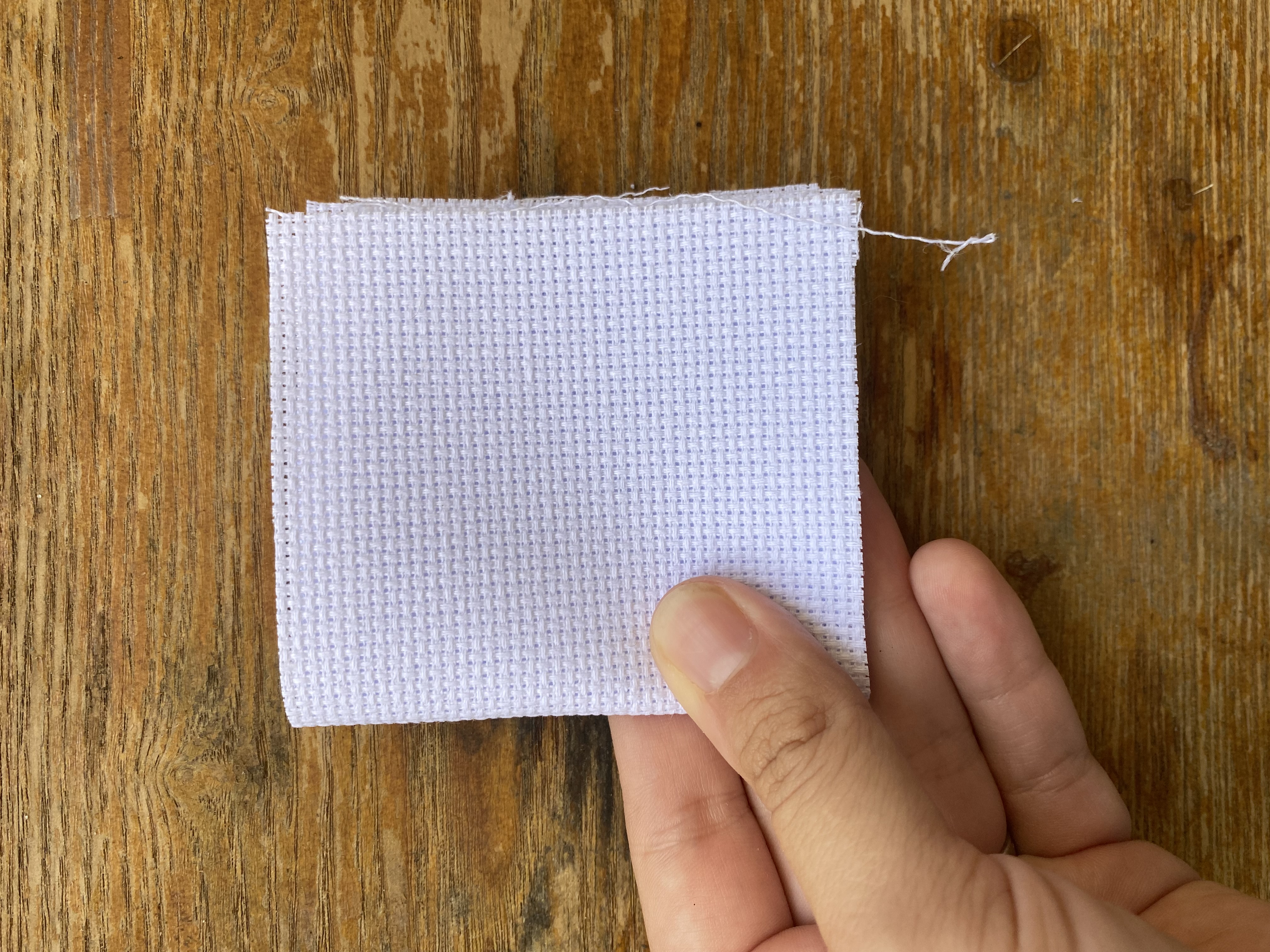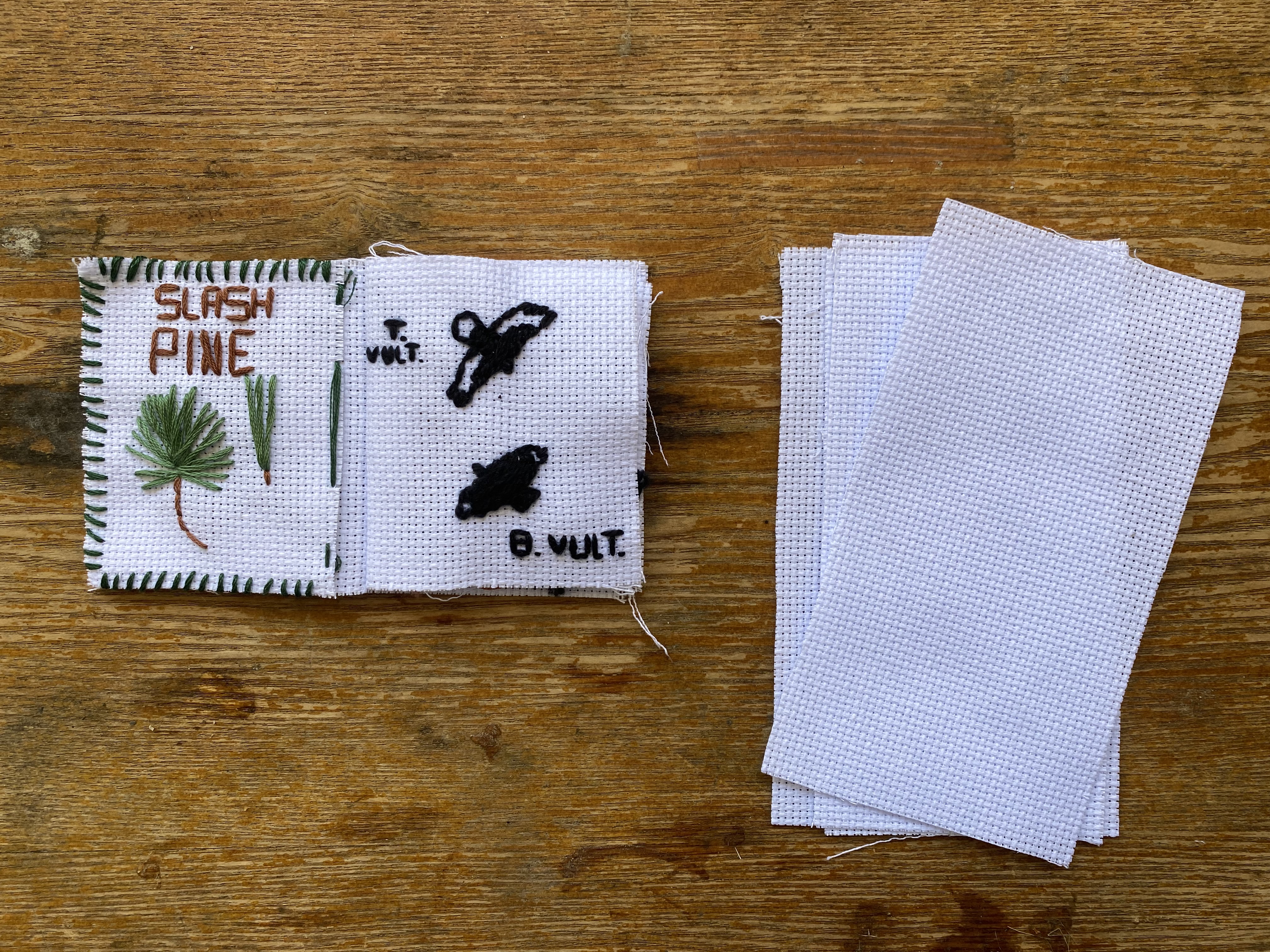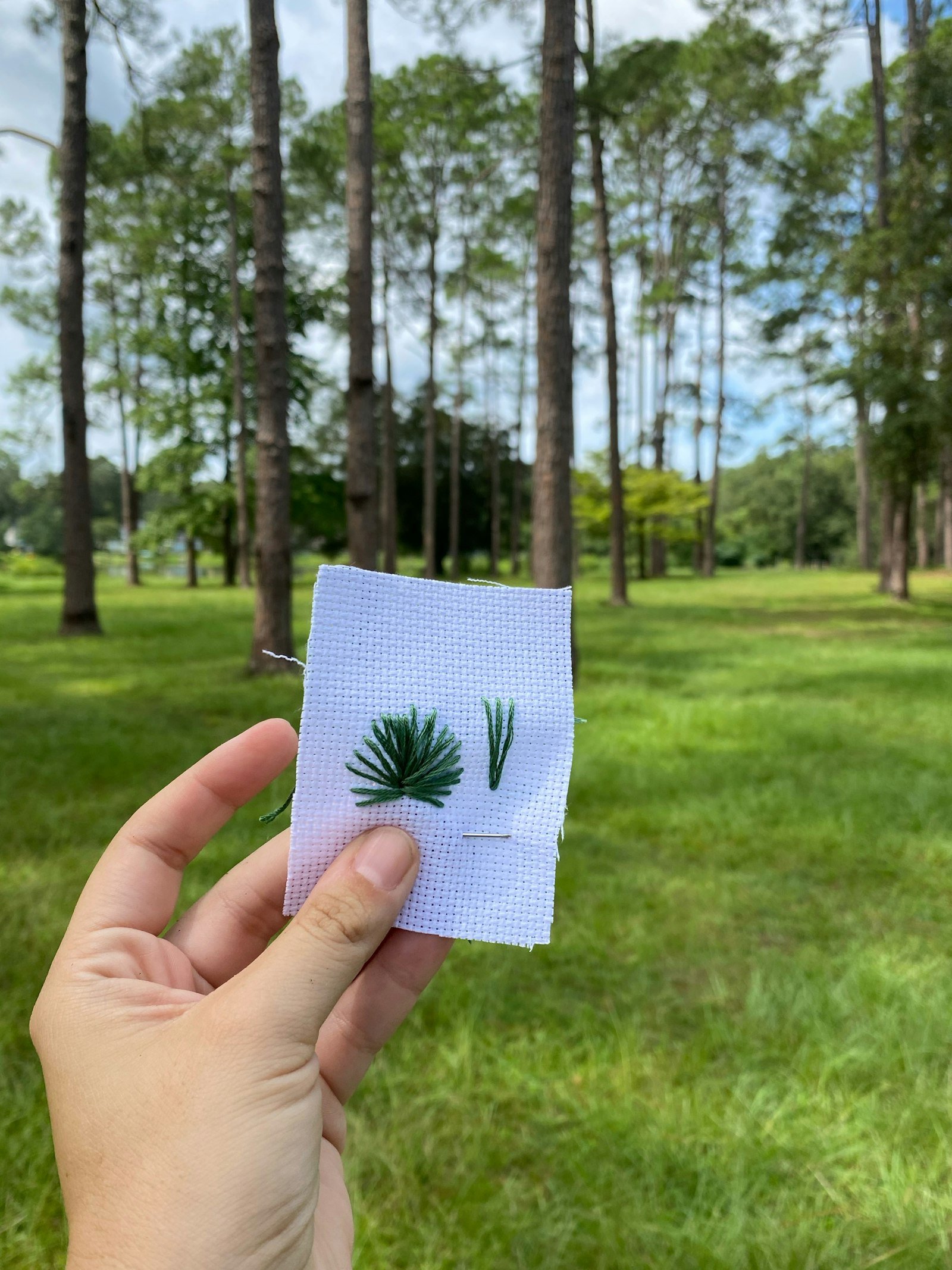Even though it’s barely 10:30 a.m., the air feels warm and muggy on my bare shoulders as I push the baby jogger into a local park. Florida summers are hot and humid, but we don’t let it keep us from exploring the natural places in our neighborhood. While my toddler starts climbing over a wooden picnic table facing a bronze-hued pond, I take a small pair of scissors, green thread, a needle, and a palm-sized square of fabric from my bag. Looking above me I notice how the long needles of tall pines sway in the breeze. Starting to stitch, I flick my eyes between the tree canopy and my embroidery page, quickly filling in a thread sketch of the needle clumps: my newest nature journal has begun.
Words and Embroidery: Historical Perspectives on Nature Journals
Written nature journals have been used for centuries to both pique curiosity about the world around us and to hold observations in one place. Charles Darwin used his nature journals when developing the theory of evolution; Dorothy Wordsworth (1771-1855) captured the beauty of England’s Lake District (and the ramblings of her famous brother, the poet William Wordsworth) at the turn of the 19th century; in 1850, Susan Fenimore Cooper (1813-1894) wrote of the need for conservation in a rapidly developing Cooperstown, New York.
Today, nature journaling remains an important method for budding and expert naturalists to refine their identification skills while honing in on field marks or species they may otherwise ignore. Writing for National Audubon Society, John Muir Laws explains, “Sometimes, birders become lazy observers.… Once we think we know what we’re looking at, we mentally fill in the gaps and move on to the next thing. By pushing yourself to record observations in a journal, you will learn to see more and, at the same time, improve your study of birds in the field.”
This holds true for all outdoor enthusiasts, including myself. These same themes—attention to and appreciation for the natural world—can easily be translated using needle and thread.

May Morris design. All-over pattern of meandering honeysuckle flowers and foliage. Printed on off-white ground.Photo credits: Cooper Hewitt, Smithsonian Design Museum.
As just one famous example, May Morris (1862-1938, daughter of William Morris), a leader of the Arts and Craft Movement in 19th century Britain and eventual head of the Embroidery Department at Morris & Co., used botanical sketches as bases not only for her own embroidery, textile, and wallpaper designs, but also to teach classes. Imagery from natural places frequently showed up in her work; in one particular panel, entitled “June,” Morris used meticulous observations of the surrounding landscape to embroider 26 different flowers growing near her home in Oxfordshire.

Three embroidery journal pages.
An Embroidered Nature Journal
I have recorded my thoughts using pen-and-pencil nature journals on and off for years, but the combination of the pandemic and a young toddler kept my usual ramblings very close to home. To maintain my curiosity within the small parks I visit almost daily, I switched to a new form of nature journal: embroidery.
A nature journal can be done in any medium. Unlike with many other forms of art, the process is more important than the final product. While information collected in nature journals can be the raw material for future projects, the attention to detail and focus demanded by the mere act of recording observations makes each practitioner a better naturalist.
Embroidery does not immediately jump to mind when considering nature journaling because it is simply slower than sketching; if I’m trying to capture a bank of clouds moving across the horizon or a flock of birds flying overhead, I may get only a few stitches down before my viewshed shifts.
I skirt this issue in two ways: I create my own nature journals using cross-stich fabric and cut very small pages, only 2.5 x 2 inches. I don’t tempt myself into spending too much time on any one page because space is so limited. Second, I resolve to truly consider my stitching as sketches on fabric and not become overly concerned if my work doesn’t look perfect. Whereas in other, more long-form projects, I would remove stitches if they didn’t look right or rework a design, now I have determined to move forward, trusting the value of the process even if my final embroidery doesn’t appear as I originally envisioned.

Comparing a long-form piece with quick embroidery sketch.
Embroidering My Pine Tree Page
I have seen the park’s pine trees—Pinus elliotti—dozens and dozens of times. But now I really zeroed in on the structure of the limbs, translating them to thread. The needles grew thickest pointed straight up out of the branch, then thinned as they fell to the side. Observing the needles that had fallen to the ground, I realized they grew in packets of two or three, joined together in a brown base. I stitched that, too, to help me remember. All the hours I spent at this park, and until that moment, I barely noticed the needles covering the grass, let alone how they formed a cluster.
This particular nature journal has 10 pages, and I devoted all of them to one park. I embroidered the different silhouettes of a turkey vulture versus a black vulture, a tree snag housing a woodpecker hole, a bright yellow butterfly, and more. Once that journal was full, I cut out and sewed together a brand new journal for a different park, thereby giving me the opportunity not only to compare between pages, but between books as well. That they are the perfect size to read to my toddler is an added bonus.
Nature journals are as unique as their creators. I prefer to sew outside in the parks themselves, but you may prefer the May Morris method and bring back sketches from which to work. While I opt to stitch simple designs on small pages, you may go for larger, more complex projects on a bigger canvas. All accomplish the same goal: appreciating the intricacies of the natural world around us.
How to Make an Embroidered Nature Journal
- Cut out rectangles from your preferred fabric, the size of two journal pages. If you cut four rectangles, there will be 14 interior pages (front and back), as well as a front and back cover.

The start of a new journal.
- Fold the rectangles in half, and use yarn or sturdy thread to sew them together along the center to form the spine. I don’t bother tying off the yarn, as I’ll hide it in the project later.

Sewing the spine.
- Embroider straight onto the pages. I don’t like having the back side of my work showing, so I cut out additional squares, embroider them, then sew them into the book, back side facing back side. This way, all interior pages have the clean side of my work facing out.

Sewing pages in.
- That’s it! Sew to your heart’s content.
Erika Zambello is a writer and communications specialist living in Florida. She is a fan of knitting on the move, especially during walks, hikes, and kayak trips. You can follow her fibercraft explorations at @knittingzdaily on Instagram.




